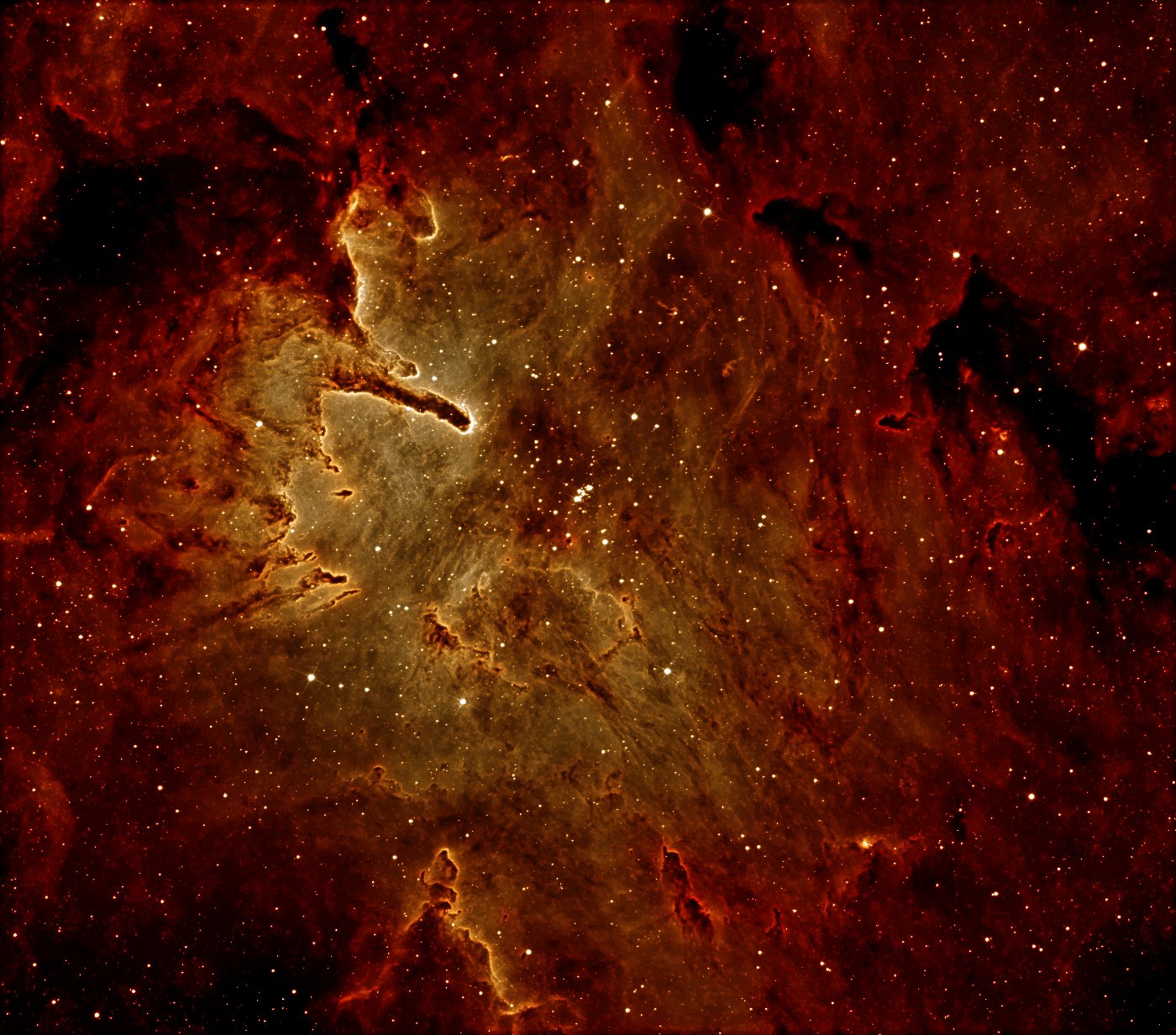SH2-86
SH2-86 is an emission nebula in constellation Vulpecula with an apparent diameter of about 40' (arcminutes). The nebula is not very bright but contains some interesting pillar-structures and Bok globules. If is assumed that the nebula is ionized by the Vulpecula OB1 association which lies at a distance of about 6000 ly from Earth ([1]) and which contains NGC 6823, the star cluster in the center of the nebula.
Click on the image to load a full resolution version using a JavaScript viewer.
![SH2-86 in [SII], H-alpha and [OIII]](vul-00-sho-1400.jpg)
![SH2-86 in [OIII], H-alpha and [SII]](vul-00-ohs-1400.jpg)

Image data
| FOV: | 0.69° × x 0.61° | ||||||||||
|---|---|---|---|---|---|---|---|---|---|---|---|
| Date: | 2019-2020 | ||||||||||
| Location: | Pulsnitz, Germany | ||||||||||
| Instrument: | 400mm Newton at f=1200mm | ||||||||||
| Camera Sensor: | Panasonic MN34230 | ||||||||||
| Orientation: | North is up (approximately) | ||||||||||
| Scale: | 1 arcsec/pixel (at full resolution) | ||||||||||
| Total exposure times: |
|
Image processing
All image processing steps are deterministic, i.e. there was no manual retouching or any other kind of non-reproducible adjustment. The software which was used can be downloaded here.Image processing steps where:
- Bias correction, photon counting
- Dark current subtraction, flatfield correction, noise estimation
- Alignment and brightness calibration using stars from reference image
- Stacking with masking unlikely values and background correction
- Extracting stars from the emission line images using information from continuum images
- Denoising and deconvolution both components (stars and residual)
- RGB-composition
- Dynamic range compression using non-linear high-pass filter
- Tonal curve correction